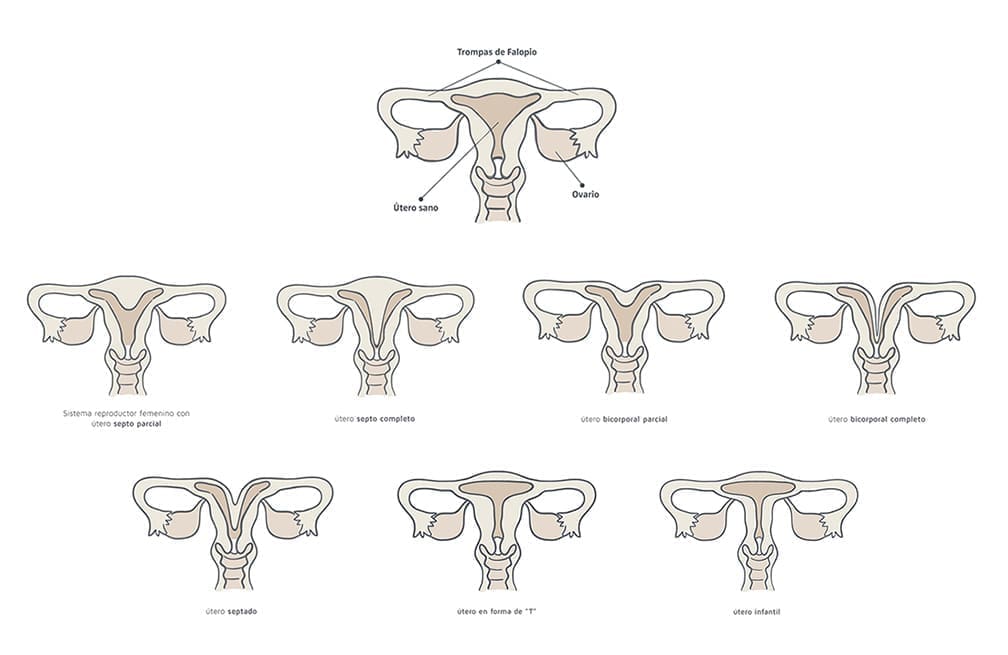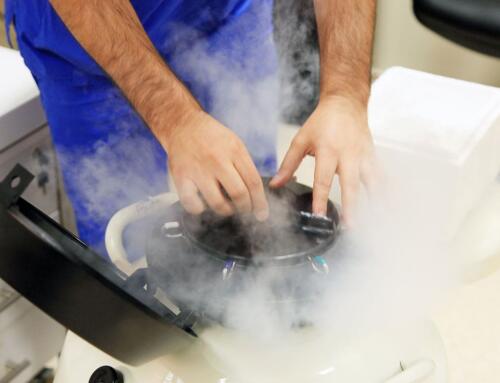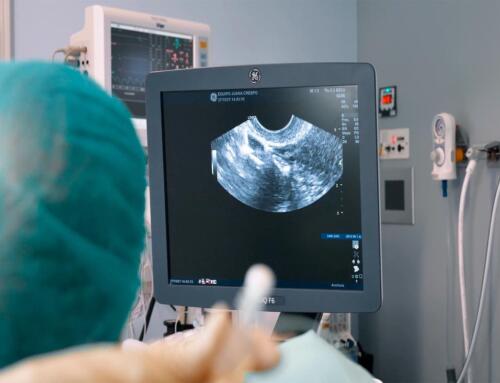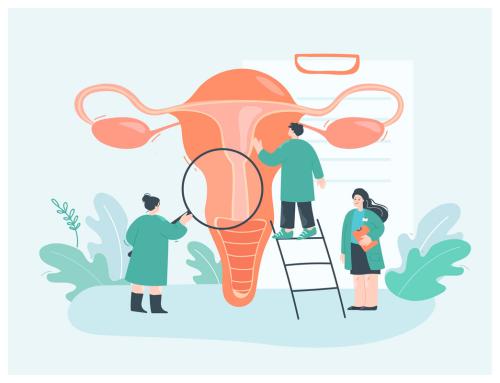Hysterosalpingography is one of the diagnostic tests that has a bad reputation among women who are investigating the causes of their infertility.
It is true that in some cases it can be uncomfortable; however, hysterosalpingography is a quick and simple test that provides valuable information about the condition of your fallopian tubes and uterus.
Did you know that this test can increase the chances of pregnancy in certain cases? This is because by irrigating the fallopian tubes with the injected fluid, it can separate small adhesions that previously prevented the passage of sperm.
If your gynaecologist has requested this fertility test, it is because she wants to assess your options for natural pregnancy or the need for assisted reproductive treatment.
However, it is not always an essential diagnostic test.
Find out if hysterosalpingography is a recommended test for you, as its usefulness depends on your specific case of infertility.
What is hysterosalpingography?
Hysterosalpingography is a diagnostic examination performed using X-rays and a contrast substance, which allows us to visualize the morphology of the uterus and fallopian tubes.
It is an outpatient procedure that takes just over 15 minutes and is performed in the radiology department. The specialist administers the contrast material through the vagina, which will color the uterus and fallopian tubes, allowing visibility of the internal organs in motion.
If during hysterosalpingography, we can see how the fluid passes through the tubes and is released into the abdomen, we can conclude that the tubes are open. On the other hand, if there is something blocking the fluid during its journey and the abdomen is not visualized, it indicates blocked fallopian tubes.
As for the most appropriate time to perform hysterosalpingography, it coincides with the non-fertile days. In other words, in the first half of the menstrual cycle (after menstruation has ended) to ensure there is no pregnancy.
It’s also worth noting that this test does not require any prior preparation or fasting, although you may be recommended to take antibiotics before and after the procedure to prevent any possible infection.
Is hysterosalpingography a painful test?
This greatly depends on your sensitivity and pain threshold.
For most women, hysterosalpingography is a somewhat uncomfortable test. It can cause pain similar to menstrual cramps, but this usually disappears after the test or within a few hours. If this is your case, you can consult with your gynaecologist about taking some pain relievers to help alleviate the discomfort.
While it is not a risk-free diagnostic test, rest assured that it rarely causes problems or side effects (such as vomiting or dizziness). Therefore, due to the valuable diagnostic information it provides, hysterosalpingography is commonly used.
What information does hysterosalpingography provide?
Through this test, your gynaecologist can observe the opening of the fallopian tubes, the shape and structure of your uterus, as well as any scars on the uterine wall or abdominal cavity:
1- In the fallopian tubes
It can determine if there is a blockage in the fallopian tubes due to infection, injury, etc. This test can determine if the tubes are open for the egg and sperm to meet and natural fertilization to occur.
- Salpingitis: inflammation of the inner part of the tube, often caused by microorganisms such as the bacteria Chlamydia trachomatis, which is responsible for the sexually transmitted disease known as chlamydia. It can also result from the spread of an infection from another nearby organ or from endometrial lesions.
- Hydrosalpinx. It is the alteration of the fallopian tubes that are blocked and dilated due to a buildup of fluid inside them. Generally, this condition is caused by a previous infection.
- Endometriosis. It is the abnormal growth of endometrial tissue outside the uterus. Endometrial adhesions are formed, which obstruct the fallopian tubes, making fertilization of the egg impossible.
2- In the uterus
Hysterosalpingography allows for the observation of abnormalities or structural malformations of the uterus (septum, unicornuate or bicornuate uterus, etc.), as well as uterine fibroids and polyps, adhesions, adenomyosis, hypoplasia, etc. In short, all those pathologies that hinder embryo implantation and significantly increase the risk of miscarriage.

3- In the cervix
With hysterosalpingography, we can check if the cervix is too narrow or wide, if there is duplication of the cervix in a possible didelphic uterus, if you have an elongated cervix, etc.
Hysterosalpingography results
Based on the results of the hysterosalpingography, our gynecologists will assess the possible causes of your infertility and the most appropriate treatment for you. These results can be of two types:
- Hysterosalpingography with a positive result:
If this is your result, it means that everything is normal and that the fallopian tubes are open. In other words, the contrast passes through them and there are no obstructions. Therefore, if there are no other fertility problems, you can try natural pregnancy or artificial insemination.
- Hysterosalpingography with a negative result:
In this case, one or both tubes may be blocked, or there may be some malformation that prevents the contrast from passing through. It may be necessary to perform additional tests to determine your problem. Once your doctor has the results of your diagnostic test, they will design your treatment strategy.
One of the most important aspects to consider is that if your tubes are closed, it is impossible for sperm to reach the site where the egg is fertilized. Therefore, natural conception or artificial insemination is not feasible in this situation. In vitro fertilization (IVF) is likely to be considered the most effective treatment for cases with negative hysterosalpingography results.
Can hysterosalpingography open blocked tubes?
As we mentioned at the beginning of this article, hysterosalpingography can also be effective as a therapeutic technique. However, this only happens in cases of mild tubal obstruction.
In these circumstances, it is possible that the passage of the contrast liquid through the tubes during the procedure can remove the obstruction and facilitate fertilization in the tubes, and therefore, pregnancy.
Is hysterosalpingography recommended for you?
Hysterosalpingography is a necessary test in different cases related to infertility and other gynecological problems.
If artificial insemination (AI) is indicated as an assisted reproductive technique in your case, the prior performance of this test will allow us to know if your tubes are open. In other words, if sperm can reach the egg.
However, if your doctor recommends in vitro fertilization (IVF) with intracytoplasmic sperm injection (ICSI), hysterosalpingography may not be necessary. This is because, in this type of treatment, the patency of your tubes is not important since after the extraction of the eggs and their fertilization in the laboratory, the embryo is directly deposited into your uterus.
It doesn’t have to be an essential test if you want to become a single mother. It’s possible that you have no fertility issues and prefer to start with artificial insemination or go directly to IVF.
In the case of wanting to undergo the ROPA method, to gestate your partner’s egg, it is also not necessary to know the patency of your tubes.
How to determine the tests and treatments you need
Unfortunately, there are still many assisted reproduction clinics that include hysterosalpingography in their initial protocols without studying other causes first to determine if this test is indicated for you.
At Juana Crespo, we provide personalized treatments that go beyond standard protocols, focusing on your specific case and the specific tests you need. We take into account your entire medical history and influencing factors, as well as studying the causes of your previous pregnancy failures, in order to decide if this test is indicated for you or not.
If it is necessary, you can have a hysterosalpingography done near your home. We will indicate where you can have it done and how to send us the results, without the need to travel to our clinic if you don’t wish to.
As you can see, hysterosalpingography is a test that provides us with very relevant information, but it is not decisive in all cases. Thanks to the anamnesis and the study we conduct at Equipo Juana Crespo during your first visit, we can determine which tests and treatments you need, avoiding that you invest time and resources in aspects that may not be most suitable for achieving your pregnancy.
If you are going to undergo a hysterosalpingography or have already done so and want us to help you clarify your doubts regarding results and treatments, call us at 961 042 557 or write to us at info@juanacrespo.es and schedule your consultation now.
















